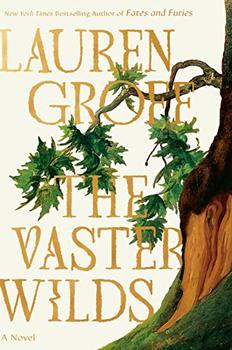Book Club Discussion Questions
Want to participate in our book club? Join BookBrowse and get free books to discuss!
Please be aware that this discussion guide will contain spoilers!
-
The Vaster Wilds is, among other things, a survival story, and survival narratives have a long history in Western culture, from classics like Robinson Crusoe to popular American children's books such as My Side of the Mountain and Hatchet to more contemporary nonfiction including Into the Wild and reality TV like Naked and Afraid and Alone. How is Groff's novel in conversation with American mythology about survival, and how does it dispel those myths?
-
The female protagonist escapes a colonial Virginia settlement where people are starving and many are dying. In the wilderness, the girl encounters Indigenous people who have a profoundly different way of life. What does she learn about the contrast between the European and Indigenous perspectives on the land, culture, and survival? How does she embody certain prejudices of her era, and in what ways does she surmount them?
-
The novel portrays the girl's powerfully intimate relationship with God, away from the influence of the church. How do you interpret the role of spirituality in the book? What did you learn from the girl's faith as it exists outside formal religion? How does her experience of the natural world inform her spirituality?
-
The protagonist faces many challenges to her physical well-being as she struggles to find food, shelter, and safety in the wild. How does the novel convey the sensations of hunger, cold, fatigue, and fear? In what ways does living on the edge of survival affect the protagonist's mental state, and what new insights, beliefs, or philosophies emerge as a result?
-
The girl arrives in America because of colonialism, and yet we see how disempowered and oppressed she is by this system. How does the novel examine power and ownership—of the earth and of people?
-
Lauren Groff's language is lush, powerful, and rhythmic, particularly when describing unusual experiences that most of us don't encounter in everyday life—a mystical confrontation with a bear, or weathering a terrible storm on a ship in which passengers die. How does this language contribute to our understanding of the girl's experiences?
-
At times during her journey, the protagonist is flooded with memories of the people she has loved, including the child Bess and the Dutch glassblower. What kinds of love does she feel for each, and how does this love sustain her? At what points during her ordeal do visions of Bess and the glassblower appear to her, and what do they represent?
-
Early in the story, the girl feels profound fear and grief, emotions that have "dwindled the self she had once known down to nothing. A nothing is no thing, a nothing is a thing with no past. It was also true that with no past, the girl thought, a nothing could be free" (page 5). What is the tension in The Vaster Wilds between freedom and history? What about between freedom and identity?
-
Reckoning with the power and violence of men is a constant part of the girl's life, from the brutal minister to the men of the fort to the Jesuit priest. In what ways has her status as a woman conscripted her into particular kinds of service in England and in the colonial settlement? In what ways does the wilderness relieve those gendered burdens?
-
The protagonist faces relentless, unimaginable hardship throughout her life, and still, arguably, she never loses hope. Discuss the role of hope in the novel. Do you see the ending as hopeful?
-
The title The Vaster Wilds could have multiple interpretations. What is its significance, and what layers of meaning did it take on over the course of your reading?
-
The wilds are less vast now than they were during the seventeenth century, when The Vaster Wilds is set, but our relationship to the environment continues to be a defining one. Did the book change your own relationship with nature? To what degree do you read this as historical fiction, and to what degree is it engaging with issues we face in the contemporary world?
Unless otherwise stated, this discussion guide is reprinted with the permission of Riverhead Books. Any page references refer to a USA edition of the book, usually the trade paperback version, and may vary in other editions.
